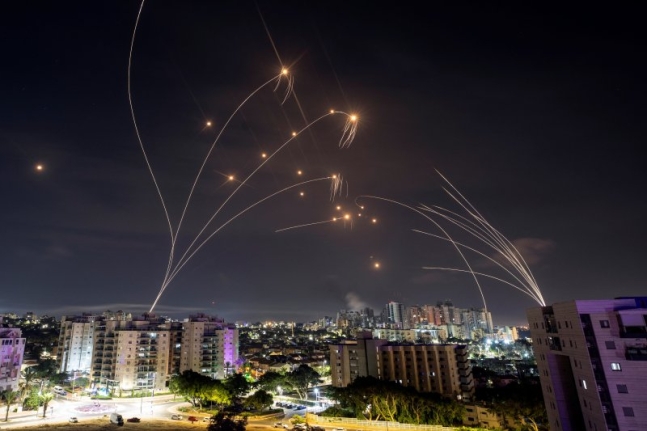
With Israel’s boast of low-altitude air defense network “Iron Dome” helplessly breached by the Palestinian militant Hamas rocket attack, attention is being paid to the South Korean military’s preparedness for North Korea’s long-range artillery attacks.
The Iron Dome is a weapon system that intercepts short-range rockets and missiles launched from Palestine. Iron Dome, which boasts an interception rate of more than 90 percent, reportedly failed to function properly in the attack against some 5,000 rockets fired by Hamas.
Israel has deployed about 10 batteries across the country, with one consisting of three launch vehicles capable of firing 20 interceptor missiles, Tamir interceptor missiles, radar with a detection distance of 150 kilometers, tracking systems, and shooting control centers. The interception range is 4-70km and the interception altitude is 10km.
One unit costs 60 billion won, and one Tamir, an interceptor missile, costs more than 60 million won. Iron Dome radar is known to detect and track up to 200 targets per minute, including rockets, shells, and missiles.
However, experts believe that even if the Iron Dome’s interception rate is more than 90%, it will not be able to intercept all of them if the rocket flies like a “herd of bees.” Hamas claims to have fired about 5,000 rockets into Israel.
As the Iron Dome is helplessly penetrated by Hamas’ rocket, there are also concerns about whether the “Korean Iron Dome” being developed by the military can respond effectively to North Korean long-range artillery.
The South Korean military plans to develop the Long Range Artillery Interception (LAMD) called the Korean Iron Dome by 2026. It plans to deploy dozens of LAMDs in Seoul and the metropolitan area to intercept North Korean long-range artillery, including 170mm self-propelled howitzers and 240mm howitzers.
In the event of a war, the North is expected to bombard Seoul and the Seoul metropolitan area with 16,000 artillery shells per hour from 1,000 artillery guns at the beginning of the war. Among them, 340 long-range artillery guns, including 200 units of six 170mm self-propelled guns with a range of 54km and 140 units of 10 240mm multi-propelled guns with a range of 60km, are directly targeting Seoul and the metropolitan area.
These long-range artillery guns are known to be more powerful and more accurate than Hamas rockets. North Korea is threatening the “sea of fire in Seoul” because it is confident in its long-range artillery capabilities.
Experts argue that damage caused by North Korea’s long-range artillery is inevitable to some extent at the beginning of the war, but if the origin of the long-range artillery launch is identified, it can be punished immediately to reduce the damage.
The South Korean military is developing a plan to neutralize North Korea’s long-range artillery mine with KTSM (Korean tactical surface-to-surface missile) and K-9 self-propelled artillery. In particular, it plans to develop KTSSM-II by November 2027, which can precisely strike long-range artillery positions from a distance of 300 kilometers or more.
In addition, it plans to develop long-range surface-to-air guided weapons (L-SAM) and mid-range surface-to-air missiles (M-SAM) improved (Block III) to establish a Korean Air and Missile Defense (KAMD) for dense complex multi-layered defense.
EJ SONG
US ASIA JOURNAL



